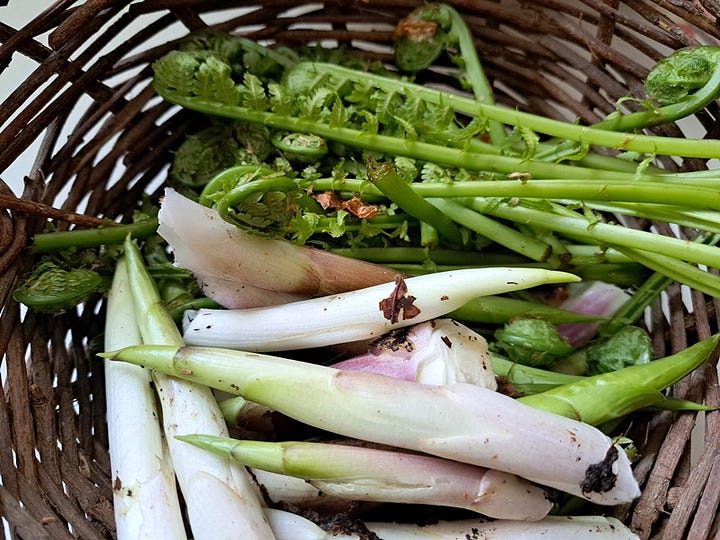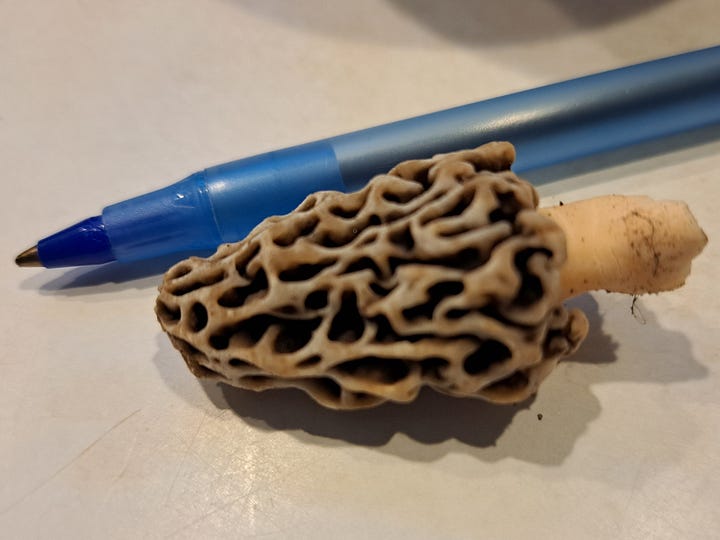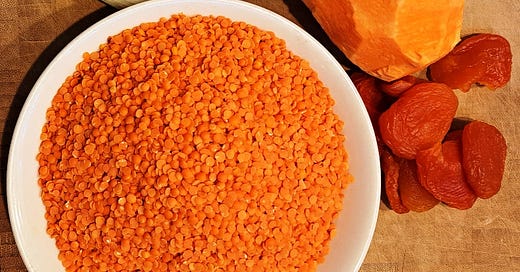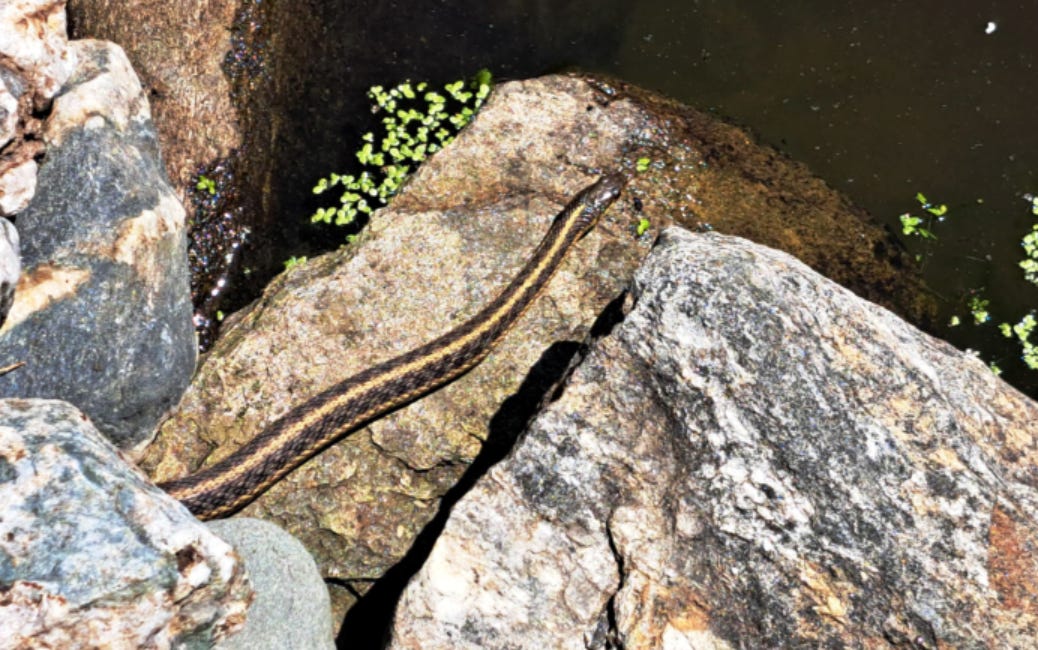There are a number of reasons to eat less meat - especially beef, and also dairy products - but it’s annoying to open a “green” cookbook and find that you’re expected to have a wide range of exotic ingredients on hand. Not everyone has preserved salted lemons in the pantry. Though my own kitchen is stocked with all too many things from specialty and especially Asian markets, when I’m sharing recipes I look for dishes that can be made from ingredients that are easy to find, preferably in a supermarket.
And you don’t need an eco-cookbook, anyhow. Vegetarian and vegan recipes are everywhere. Here’s one from a dog-eared paperback by an American novelist and cookery writer named Laurie Colwin. I’ve made this, and varied it greatly, for years, but you might want to stick to her simple version. Hers doesn’t even call for chili powder (an American spice blend), but it’s still a pleasant and easy bean soup-stew.
If you happen to be a vegetarian, or run with vegetarians, or don't eat very much meat, vegetarian chili is calling out to you. This recipe, which is embarrassingly simple and always tastes wonderful, has also been intensively child tested, even on picky eaters. You need 1 cup black beans; 1 cup little red beans; 1 chopped onion; 2 big cloves of garlic, minced; and a large can of plum tomatoes, juice and all, plus 2 to 3 cups of water. These ingredients go into a pot, the pot goes on top of the flame tamer, and you go out. In four hours you have vegetarian chili, which the next day can be heated up and put into someone's lunch box.
(I add cumin, dried chilis, a little cinnamon, and some unsweetened chocolate or cocoa.)
Traditional cuisines are plant-based because poor people can’t afford a lot of meat and depend on what they can grow or buy locally. This does not mean their meals are less delicious than haute cuisine or a meal at the French Laundry. I’ve come to think that Asian cuisine is even more inventive, and even more frugal, French provincial cuisine and Italian country cooking. It not only takes “nose to tail” seriously, but finds ways to use every part of plants: savory lettuce stems are a good example.
Then there’s found food, like fiddleheads and hostas in early spring, and mushrooms if you are more knowledgeable and luckier than I. I spotted a single morel this spring.


Lentils are easy to buy, cheap, and adaptable. They are probably as climate-conscious as you can get. “While start-ups scramble to engineer a sustainable protein, from lab-grown meat to fake burgers, lentils are a ready solution, one with a proven record," said an article in the Washington Post. The little green French ones make an excellent salad, especially with goat cheese. I like this recipe, labeled “cheap caviar.”
Here is a favorite lentil soup that’s really easy yet a little different. It’s made from “red” lentils (photo above top), which are actually orange and melt into a creamy golden puree in a very short time. This soup also makes great baby food.
The recipe comes from Crank’s, the London vegetarian restaurant that started in the sixties on Carnaby Street. I’ve made it for years. Somewhere along the line I started adding ground coriander. Sometimes I turn it into a curried lentil soup simply by swapping in curry powder or paste. I often put chopped parsley or cilantro on top before serving. I find that sweet potato is a delicious alternative to regular potato.
Armenian soup
Red lentils, washed 2 oz (50 g)
Dried apricots, washed 2 oz (50 g)
Large potato 1
Vegetable stock 2 pt (1.21)
Lemon, juice of 1
Ground cumin 1 tsp (5 ml)
Parsley, chopped 3 tbsp (45 ml)
Salt & pepper to taste
Place lentils and apricots in a large saucepan. Roughly chop the potato and add to the pan with remaining ingredients. Bring to the boil, cover and simmer for 30 minutes. Allow to cool, then blend in a liquidizer goblet until smooth. Reheat to serving temperature and adjust seasoning to taste.
(For baby food, I simply waited to add the seasonings until the main ingredients were cooked. I pureed the lot, set aside some for baby, then added the cumin and other seasonings.)
Then there is Ukrainian cuisine, which is varied and colorful and piquant, with a wide range of vegetarian and just-a-little-meat dishes. The cookbooks I’ve been using:
Hercules, Olia. 2015. Mamushka: A Cookbook. San Francisco, CA: Weldon Owen.
Nesteruk, Tatyana. 2020. Beyond Borscht: Old World Recipes from Eastern Europe: Ukraine, Russia, Poland & More. Salem, MA: Page Street Publishing Co.
When I went to the authors’ websites, I found that meat and sweets were featured far more than the grains and vegetables that get major attention in the books.
The recipes in Mamushka include beet & prune salad, Armenian roasted vegetables (I love the food-waste side note to keep the cabbage core in, “it’s the best bit”), cabbage slaw with toasted sunflower seeds, and piquant Russian broth (a good way to use a little leftover Katz’s salami). It’s the salad recipes in Beyond Borscht I find most inspiring. They use ingredients and combinations that are new to me, with an abundance of fresh herbs and plenty of garlic. The mushroom buckwheat is a side-dish that could easily be a main course, and I was taken with the “Korean” carrot salad that features in other cookbooks from that region.
Korean Carrot Salad
Saute a chopped sweet onion in 1/4 cup vegetable oil till soft and translucent (not brown), add a 1/2 teaspoon powdered coriander and paprika, and a sprinkle of red pepper flakes, and quickly remove from heat. Cool. Add this flavored oil to a bowl of 6-7 grated carrots with about a tablespoon of vinegar, a teaspoon of salt, some black pepper, a handful of chopped cilantro, and [this is the Korean kicker] 6 cloves of garlic, finely chopped or pressed.
That salad is a variation of the ubiquitous and delicious French carottes râpées, which is everywhere in France (even at airports!) and should be everywhere everywhere that carrots are abundant. The French version consists of grated or julienned carrots dressed with a little good vegetable oil (I like to add some walnut oil, too), lemon juice, salt and pepper, and a good handful of chopped parsley. I also like chives and dill, and a little Dijon mustard is nice but certainly not necessary.
A few stray recommendations
Tofu With Garlic & Basil, from the The Vegan Chinese Kitchen by Hannah Che, is an easy, surprising salad and would be a good way to introduce a Westerner to tofu. And here’s my current favorite website for Chinese food ideas: The Omnivore’s Cookbook.
Limiting dairy is probably more of a challenge for me than limiting meat so I wanted to test this Dairy-free Alfredo. It is not “off the shelf” but it is tasty, and light too. And here’s a vegan Mexican tortilla bake from the same source. I’m not sure that cashews or coconuts count as climate-sensitive in Massachusetts, but they do make pleasant creamy sauces.
Meanwhile, the pond’s ecosystem is developing nicely, and instructively. While I ate my lunch yesterday I watched a garter snake (harmless and beneficial) cruising the edge of the pond looking for a meal. The frogs dived out of the way, one by one.







I enjoy eating lentils but I find that they don’t keep me full for as long as other proteins. Any suggestions on how to counteract that?